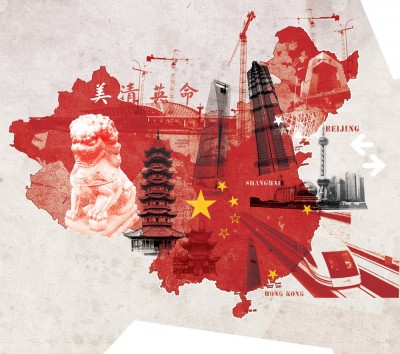Peace, Harmony and Happiness, Plus a Deluge of Yuan. The Belt and Road Forum in Beijing
Inclusive globalization, win-win global trade, Made in China 2025 ... President Xi uses Belt and Road Forum to explain how sprawling trade initiative will change China and the world

President Xi Jinping, in his keynote speech that opened the two-day Belt and Road Forum for International Cooperation in Beijing, did his best to explain the future of the New Silk Roads.
Xi said that the Belt and Road Initiative (BRI) – that what was once “One Belt, One Road” (OBOR) – is a multilateral project set to bring “peace, harmony and happiness” across Eurasia by “strategically connecting” nations as diverse as Russia, Mongolia, Turkey and Vietnam through development plans that are already operational. And, he added, they will be a success because extra funds are already on their way.
Xi told his audience, that included Russian President Vladimir Putin, Turkish President Recep Tayyip Erdogan, Philippines President Rodrigo Duterte and a host of other world leaders and top ranking officials, that he had proposed an additional RMB 780 billion (approximately US$113 billion) to be disbursed through multiple sources.
These include the Silk Road Fund; the China Development Bank; the Export and Import Bank of China and also overseas capital provided by Chinese banks. The Asian Infrastructure Investment Bank (AIIB) is not part – at least not yet – of this proposed package.
That’s still a long way towards fulfilling Asia’s gargantuan infrastructure needs – estimated to be at least $5 trillion up to 2022.
Economic logic certainly points to connectivity between Asia and Europe compressing as mutual trade multiplies. Italy and the UK are already enthusiastic supporters of OBOR/BRI. As too are Germany’s industrialists.
Significantly, before the summit, Xi was in a phone call with new French President Emmanuel Macron, who took power this Sunday. Xi not only offered the requisite support for EU integration; he encouraged Macron to buy into the New Silk Roads – which are not exactly understood in France’s business and media – as part of a unified EU strategy.
There’s no question that this massive attempt at infrastructure building – pipelines, ports, roads, high-speed rail, fiber-optic cables – that aims to unify Eurasia into a seamless trade emporium is the definitive 21st century geoeconomic/geopolitical project.
OBOR/BRI will configure Globalization Mark II, or which Xi in Davos defined as “inclusive globalization”.
Which is really the same as interpreting OBOR/BRI as “de-Americanized globalization”.
And OBOR/BRI will certainly act as an essential component of Xi’s Made in China 2025 strategy and the now central aspirational “Chinese Dream” concept. The initiative has become the trade/economic foreign policy arm of Xi’s drive to move China into the status of a “moderately affluent” society.
What Xi is aiming at during the Beijing summit is to address two key but controversial points. How China proposes to finance OBOR/BRI. And how to build a consensus that this is a Eurasia-wide “win-win” operation.
About that black or white cat

New Silk Road activity is already frantic. Take the China-Europe Railway Express for instance. It spans 51 different rail links with freight trains already connecting 27 Chinese and 28 European cities. There’s also a planned rail line between China and Laos and a high-speed rail between Yunnan province in China and Thailand. In Malaysia there is Kuantan port industrial park and aluminium and palm oil processing. In Turkey three state-owned Chinese companies are turning the country’s third largest port, Kumport, into a key OBOR/BRI node.
Among all these myriad projects, arguably the most ambitious is the US$46 billion China-Pakistan Economic Corridor (CPEC). It’s a complex network of roads, rail, oil/gas pipelines, ports, airports and special economic zones linking Xinjiang to Gwadar port in Balochistan and is first New Silk Road project to get direct investment from the Silk Road Fund.
In November 2016, an upgraded and extended Karakoram highway linked this Arabian Sea port with the ancient Chinese silk road of Kashgar.
As Xi has stressed, China, beyond CPEC, will get even closer, geopolitically, to Pakistan under the framework of the Shanghai Cooperation Organization (SCO).
Cue to India throwing tantrums – and then sending a low-level delegation to the Beijing summit.
That could be said to be counterproductive because China and India’s development strategies are not mutually exclusive. India is the second largest shareholder of the AIIB, after China and both China and India are equal partners in the New Development Bank (NDB) – the BRICS bank – which is not directly implicated in financing OBOR/BRI projects.
And most of all China and India are both members of the Bangladesh-China-India-Myanmar Economic Corridor (BCIM-EC); that has the aim of – what else – economic development. BCIM-EC could either become a branch of OBOR/BRI or proceed as a stand-alone mechanism, with equal voice by all members.
So to upgrade Deng Xiaoping.
“It doesn’t matter if the New Silk Road cat is black or white, as long as it catches mice”.
And catching mice in the 21st century means Eurasia integration.


